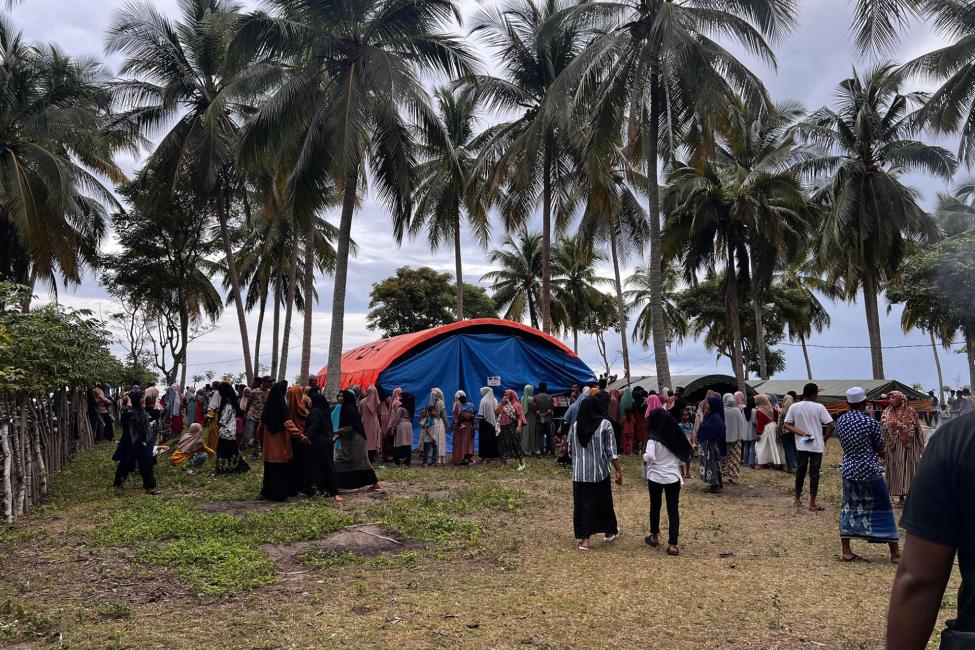-
Who we are
WHO WE AREThe International Organization for Migration (IOM) is part of the United Nations System as the leading inter-governmental organization promoting since 1951 humane and orderly migration for the benefit of all, with 175 member states and a presence in over 100 countries. IOM joined the United Nations system in September 2016.
About
About
IOM Global
IOM Global
-
Our Work
Our WorkAs the leading inter-governmental organization promoting humane and orderly migration, IOM plays a key role to support the achievement of the 2030 Agenda through different areas of intervention that connect both humanitarian assistance and sustainable development.
Cross-cutting (Global)
Cross-cutting (Global)
- Data and Resources
- Take Action
- 2030 Agenda
More Than Half of Child Trafficking Victims are Trafficked Within Their Own Countries: IOM-Harvard Report
Geneva/ Washington – More than half of child trafficking victims are trafficked within their own country according to new report by the International Organization for Migration (IOM) and François-Xavier Bagnoud Center for Health and Human Rights at Harvard University (FXB). The report further reveals that in cases of international trafficking children are mostly trafficked to neighbouring, wealthier countries.
Despite significant efforts, the number of children who continue to fall victim to traffickers remains high, largely due to inequitable social, economic, environmental, and political factors that foster exploitative and discriminatory practices. Close to half of the child victims of trafficking were being trafficked for forced labour (mainly boys), in a wide range of industries, such as domestic work, begging and agriculture. Sexual exploitation, including through prostitution, pornography, and sexual servitude, is also prominent, affecting 20 per cent of trafficked children, predominantly girls.
According to the report titled From Evidence to Action: Twenty Years of IOM Child Trafficking Data to Inform Policy and Programming, child victims trafficked for sexual exploitation were commonly trafficked internationally, while those trafficked for forced labour were more likely to be trafficked domestically. Involvement of family and friends in their recruitment, is a prominent trend with more than half of child victims experiencing this.
“The report shows that child trafficking is a multifaceted and complex phenomenon that continues to spread and evolve within and across borders. No age range, no gender, and no nationality is immune to child trafficking; it is a truly global phenomenon,” says Irina Todorova, Head of IOM’s Core Protection Unit.
Effectively addressing child trafficking requires up-to-date and reliable data to empirically ground policy and programming. At present, actionable data are limited, and child victims are typically hard to reach through traditional surveys, for a variety of reasons.
This report, a first of its kind, is based on analysis of extensive, globally sourced data, using the IOM Victims of Trafficking Database (VoTD). The largest available international database of individual victims of trafficking, the VoTD contains primary data collected from approximately 69,000 victims of human trafficking of 156 nationalities, trafficked in 186 countries, who registered with IOM in 113 countries where the Organization works; 18.3 per cent of VoTs in the database were children.
The study assessed the factors that drive vulnerability to trafficking, and revealed trends for the trafficking were mostly gendered, informed by education and income levels of the victims (and their families). For instance, boys were almost twice as likely to be trafficked as children than girls and had 39 per cent less likelihood of being trafficked internationally than domestically, as compared to girls. Victims with little or no education were more than 20 times more likely to be trafficked than victims who had attended high school while children from low-income countries were five times more likely to be trafficked as a child (rather than as an adult) when compared to victims from high-income countries.
The report contributes to understanding child trafficking’s dynamics and drivers while focusing on the vulnerabilities and human rights violations that emerge throughout the trafficking process.
“It has never been more urgent to scale up our efforts and ensure that eliminating trafficking in persons remains an international priority, with responses tailored to the context of each country, and to the complex intersection of individual, community and societal factors affecting children,” urges Monica Goracci, Director of IOM’s Department of Programme Support and Migration Management.
***
For more information, please contact:
From IOM: Kennedy Okoth, kokoth@iom.int
From Harvard: Danai Macridi, danaiprado@hsph.harvard.edu

